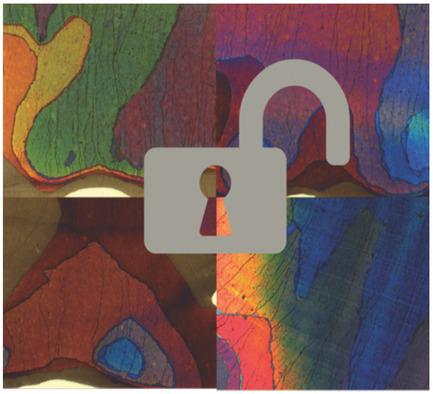当前位置:
X-MOL 学术
›
Adv. Mater.
›
论文详情
Our official English website, www.x-mol.net, welcomes your
feedback! (Note: you will need to create a separate account there.)
Nanocrystalline Precursors for the Co‐Assembly of Crack‐Free Metal Oxide Inverse Opals
Advanced Materials ( IF 27.4 ) Pub Date : 2018-01-19 , DOI: 10.1002/adma.201706329 Katherine R. Phillips 1 , Tanya Shirman 2, 3 , Elijah Shirman 2, 3 , Anna V. Shneidman 2 , Theresa M. Kay 2 , Joanna Aizenberg 1, 2, 3
Advanced Materials ( IF 27.4 ) Pub Date : 2018-01-19 , DOI: 10.1002/adma.201706329 Katherine R. Phillips 1 , Tanya Shirman 2, 3 , Elijah Shirman 2, 3 , Anna V. Shneidman 2 , Theresa M. Kay 2 , Joanna Aizenberg 1, 2, 3
Affiliation

|
Inorganic microstructured materials are ubiquitous in nature. However, their formation in artificial self‐assembly systems is challenging as it involves a complex interplay of competing forces during and after assembly. For example, colloidal assembly requires fine‐tuning of factors such as the size and surface charge of the particles and electrolyte strength of the solvent to enable successful self‐assembly and minimize crack formation. Co‐assembly of templating colloidal particles together with a sol–gel matrix precursor material helps to release stresses that accumulate during drying and solidification, as previously shown for the formation of high‐quality inverse opal (IO) films out of amorphous silica. Expanding this methodology to crystalline materials would result in microscale architectures with enhanced photonic, electronic, and catalytic properties. This work describes tailoring the crystallinity of metal oxide precursors that enable the formation of highly ordered, large‐area (mm2) crack‐free titania, zirconia, and alumina IO films. The same bioinspired approach can be applied to other crystalline materials as well as structures beyond IOs.
中文翻译:

用于无裂纹金属氧化物反蛋白石共组装的纳米晶体前体
无机微结构材料在自然界无处不在。但是,它们在人工自组装系统中的形成具有挑战性,因为它涉及组装期间和组装后竞争力的复杂相互作用。例如,胶体组装需要对诸如颗粒的大小和表面电荷以及溶剂的电解质强度等因素进行微调,以实现成功的自组装并最大程度地减少裂纹的形成。模板胶体颗粒与溶胶-凝胶基质前体材料的共组装有助于释放在干燥和固化过程中积累的应力,如先前从非晶态二氧化硅形成高质量反蛋白石(IO)膜所显示的那样。将这种方法扩展到结晶材料将产生具有增强的光子,电子,和催化性能。这项工作描述了定制金属氧化物前体的结晶度,从而能够形成高度有序的大面积(mm2)无裂纹的二氧化钛,氧化锆和氧化铝IO膜。相同的生物启发方法可以应用于其他晶体材料以及IO以外的结构。
更新日期:2018-01-19
中文翻译:

用于无裂纹金属氧化物反蛋白石共组装的纳米晶体前体
无机微结构材料在自然界无处不在。但是,它们在人工自组装系统中的形成具有挑战性,因为它涉及组装期间和组装后竞争力的复杂相互作用。例如,胶体组装需要对诸如颗粒的大小和表面电荷以及溶剂的电解质强度等因素进行微调,以实现成功的自组装并最大程度地减少裂纹的形成。模板胶体颗粒与溶胶-凝胶基质前体材料的共组装有助于释放在干燥和固化过程中积累的应力,如先前从非晶态二氧化硅形成高质量反蛋白石(IO)膜所显示的那样。将这种方法扩展到结晶材料将产生具有增强的光子,电子,和催化性能。这项工作描述了定制金属氧化物前体的结晶度,从而能够形成高度有序的大面积(mm2)无裂纹的二氧化钛,氧化锆和氧化铝IO膜。相同的生物启发方法可以应用于其他晶体材料以及IO以外的结构。











































 京公网安备 11010802027423号
京公网安备 11010802027423号